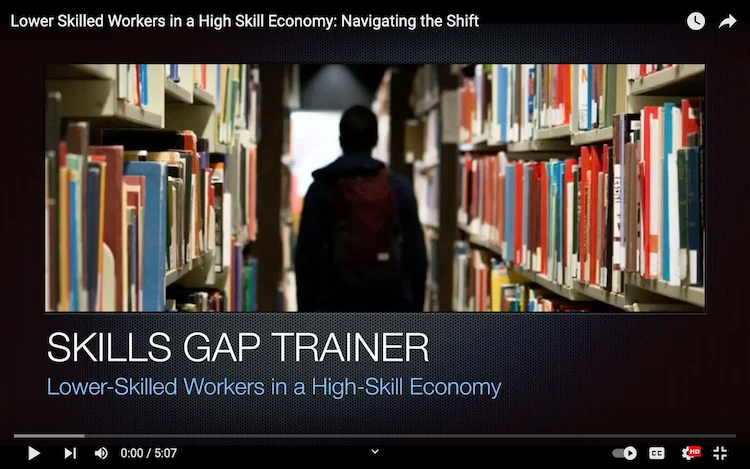As the 21st century unfolds, modern economies find themselves grappling with a significant challenge – an imbalance between the supply of lower-skilled workers and the demand for high-skilled jobs. This skills mismatch, driven by factors such as changing educational patterns and demographic shifts, has far-reaching implications for communities and economies. Adding to the complexity of this issue is the advent of automation and artificial intelligence, reshaping the nature of jobs and skill requirements across industries.
-
The Evolving Landscape of Job Skills
Historically, experience on the job has been a highly valued commodity. However, as the dynamics of economies have evolved, the demand for higher-level skills—often acquired through post-secondary education or specialized training—has increased. The accelerated growth of technology, the shift towards a knowledge-based economy, and global competition have necessitated a workforce proficient in complex problem-solving, analytical thinking, and digital proficiency.
-
The Imbalance Between Lower and Higher Skills
Interestingly, as the demand for high-skilled jobs has grown, the pace at which workers are attaining post-secondary education has decelerated, particularly in the United States. This has led to a mismatch between the availability of lower-skilled workers and the prevalence of high-skilled vacancies. The impact of this imbalance is twofold. Firstly, economies are unable to reach their full potential due to a lack of appropriately skilled labor. Secondly, lower-skilled workers face higher unemployment rates, contributing to socioeconomic disparities.
-
The Impact of an Aging Workforce
Compounding this problem is the impending retirement of the ‘baby boomer’ generation. Representing approximately 40% of the labor force, their departure threatens to exacerbate the skills gap further. These workers carry with them years of accumulated knowledge and expertise that cannot be easily replaced by younger workers, who lack equivalent experience and often the necessary skills.
-
The Automation of Jobs
The automation of jobs adds another layer of complexity to this issue. According to research by the Brookings Institution, approximately 25% of jobs in the United States are at high risk of automation. Jobs particularly vulnerable to automation include those requiring repetitive, routine tasks, many of which fall into the lower-skilled category.
However, automation isn’t solely a risk; it’s also an opportunity. It is predicted that automation will also create new jobs that require unique human skills, such as complex problem-solving, creativity, and emotional intelligence. This shift underscores the importance of continual learning and upskilling, particularly in areas less susceptible to automation.
-
The Role of Training and Development
Given the landscape, the need for effective training programs, including Massive Open Online Courses (MOOCs) and AI-enabled education platforms, becomes paramount. Such platforms enable individuals to continually upgrade their skills to stay relevant in an evolving market. Companies also have a responsibility to provide their employees with access to such training to ensure they have the right skills to stay competitive.
-
Government’s Role in Addressing the Skills Gap
Government bodies can help address this skills gap by investing in education and vocational training programs. They can also fund research to identify emerging skills and provide labor market information to guide the development of relevant training programs.
-
The Way Forward
Addressing the skills gap and realigning the workforce with the needs of modern economies is a complex, multi-faceted issue. It requires a collective effort from individuals, companies, and governments to ensure workers are equipped with the skills needed for the jobs of today and the future. This involves fostering a culture of lifelong learning, investing in effective training programs, and providing support and resources to help individuals and companies navigate the challenges ahead.
As we navigate this terrain, the focus should not be on resisting change, but rather embracing it, by equipping individuals with the skills needed to thrive in a constantly evolving, increasingly automated world. The future of work may be uncertain, but with the right skills, workers can be prepared to adapt and excel in whatever comes next.
Related books and resources:
“The Skills Gap: Bridging the Divide between Employer Expectations and Employee Capabilities” by James Bessen – This book explores the divide between the skills employers need and the skills employees possess, offering insights and solutions to bridge this gap.
“The Future of Work: Robots, AI, and Automation” by Darrell M. West – West delves into how automation and artificial intelligence are reshaping the landscape of work and what that means for the skills workers need to succeed.
“New Skills for New Jobs” by Barbara J. Deal and Terry L. Deal – This guide provides a comprehensive look at the evolving job market and outlines strategies for individuals and organizations to develop the necessary skills for new job opportunities.
“Workforce Reimagined: How Companies Are Coping with the Skills Gap” by Jeff Wald – Wald investigates how companies across various industries are addressing the skills gap and re-imagining their approach to workforce development.
“Retooling for an Aging America: Building the Health Care Workforce” by the Institute of Medicine – Although focused on healthcare, this book offers valuable perspectives on preparing a workforce to meet the needs of an aging population, highlighting the intersection of demographic shifts and skill requirements.
“Upskilling America: How Employers, Educators, and Policymakers Can Work Together to Create Economic Opportunity for All” by Jaime S. Fall and Phyllis Hartman – This book examines how different stakeholders can collaborate to address the skills gap and improve economic opportunity through education and training.
“Learning for Life: How Continuous Education Will Keep Us Competitive in the Global Knowledge Economy” by Jason Wingard and Michelle LaPointe – This text discusses the importance of lifelong learning in maintaining competitiveness in a global, knowledge-driven economy, aligning closely with the themes of continuous learning and adaptation mentioned in our post.
To see our Donate Page, click https://skillsgaptrainer.com/donate
To see our Instagram Channel, click https://www.instagram.com/skillsgaptrainer/
To see some of our Udemy Courses, click SGT Udemy Page
To see our YouTube Channel, click https://www.youtube.com/@skillsgaptrainer